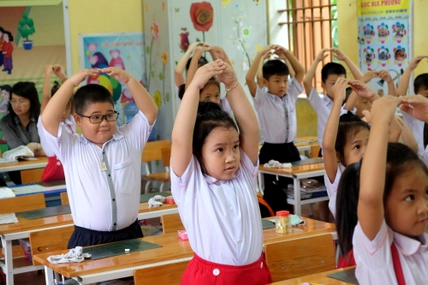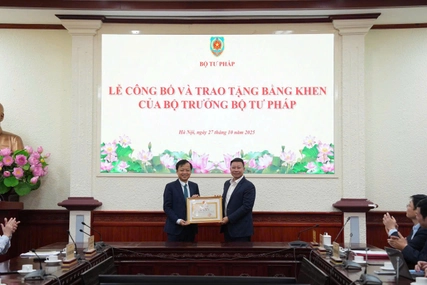Tuition collection is an important factor that all parents and students pay attention to when choosing any university. The following article can be helpful in supplying the latest tuition collection of universities in the 2022 - 2023 school year for all public education institutions.
1. The top tuition collection
The top tuition collection from the 2022 - 2023 school year to the 2025 - 2026 school year is as follows:
Unit:VND thousand/month
Major | Public universities | |||
Not guaranteed recurrent expenditure entirely for majors | Guaranteed recurrent expenditure entirely | Guaranteed recurrent expenditure and investment expenditure entirely | ||
Major I Teacher education and training science | 1,250 |
| 3,125 | |
Major II: Fine arts | 1,200 | 2,400 | 3,000 | |
Major III: Business and administration, law | 1,250 | 2,500 | 3,125 | |
Major IV: Life sciences, natural sciences | 1,350 | 2,700 | 3,375 | |
Major V: Mathematics and statistics, computer and information technology, technical technology, engineering, manufacturing and processing, architecture and construction, agriculture, forestry, aquaculture, and animal health | 1,450 | 2,900 | 3,625 | |
Major VI.1: Other health majors | 1,850 | 3,700 | 4,625 | |
Major VI.2: Pharmacy | 2,450 | 4,900 | 6,125 | |
Major VII: Humanity, social sciences and behavior, journalism and communication, social services, tourism, hotels, sports, transport service, environment, and environmental protection. | 1,200 | 2,400 | 3,000 | |
2. Tuition collection of online learning

3. Tuition collection calculated by credits and modules
Tuition collection of credit or module is determined based on the total tuition of the entire course by training a major and the total number of credits or modules of the entire course using the following formula:
Tuition of a credit/module = | Total tuition of a course |
Total number of credits/modules of the course |
Total tuition of a course = tuition for 01 student/month x 10 months x number of school years,
make sure that maximum total tuition by the credit of the training program equals total year-based tuition.
In case of studying for longer than the intended period, credit-based tuition applied from the point of exceeding the intended period shall be determined again based on the actual studying period in a manner that covers the costs and must be transparent to the learners.
In the case of training for the second university degree, learners shall pay tuition according to an actual number of credits in a training program.
4. Tuition collection for part-time training and distant education
Tuition for part-time training and distance education is determined on the basis of reasonable costs without exceeding 150% of the tuition of the respective formal education program.
Unit VND thousand/month
Majors | Part-time training and distance education |
Major I Teacher education and training science | 1,875 |
Major II: Fine arts | 1,800 |
Major III: Business and administration, law | 1,875 |
Major IV: Life sciences, natural sciences | 2025 |
Major V: Mathematics and statistics, computer and information technology, technical technology, engineering, manufacturing and processing, architecture and construction, agriculture, forestry, aquaculture, and animal health | 2,175 |
Major VI.1: Other health majors | 2775 |
Major VI.2: Pharmacy | 3,675 |
Major VII: Humanity, social sciences and behavior, journalism and communication, social services, tourism, hotels, sports, transport service, environment, and environmental protection. | 1,800 |
5. Regulations on tuition collection
- Tuition shall be collected on a monthly basis or if the learners will to, on a semester or school-year basis.
- Tuition shall be collected for up to 10 months/year.
- In case of natural disasters, epidemics, or other force majeure events, tuition shall be collected for the specific number of months of studying; do not collect tuition for periods where classes are not provided.
- Tuition must satisfy a number of months of studying and necessary costs for organizing teaching without exceeding total tuition calculated by the maximum number of months of a school year
- In the case of studying in credits, education institutions may convert in order to collect tuition by credits while keeping total credit-based tuition of the entire course from exceeding year-based tuition regulated for the entire course.
6. Eligibility for tuition exemption
No. | Eligibility for tuition exemption |
1 | People with meritorious services to the revolution |
2 | Students with disabilities and difficult economic conditions |
3 | Students pursuing education via special admission |
4 | Students in vocation education institutions and higher education institutions, ethnic minorities in poor households or near-poor households |
5 | Students pursuing Marxism-Leninism and Ho Chi Minh’s Thought. |
6 | Students, higher education students specialized: In tuberculosis, leprosy, psychology, forensic examination, psychology examination |
7 | Ethnic students |
8 | Students, higher education students, and researchers specialized in atomic energy. |
9 | Learners studying in specific majors satisfy socio-economic development demands, national defense, and security. |
7. Eligibility for tuition reduction
Level | Subjects |
70% | Students pursuing traditional arts and specific majors in public, private vocational education institutions, and higher education institutions providing cultural - artistic training |
Students pursuing traditional art forms or taxing, toxic, or hazardous occupations in case of vocational education as per lists of taxing, toxic, or hazardous occupations; | |
Students who are ethnic minorities (other than very minor ethnic minorities) in hamlets with particular difficulties, communes. | |
50% | Students who are children of officials, public officials, or workers whose parent suffers from occupational accidents or diseases receive regular benefits. |
Here is all information on the latest tuition level for the 2022 - 2023 school year.










